October 13, 2021
Planting for Tree Equality and Heat Island Effect: TreeFolks
Troubled trees, you say? No surprise, since the past few years have been pretty hard on them. Along with off-and-on drought, lack of consistent, ground-soaking rain, and February’s hard freeze, widespread construction has felled a lot of our shade and wildlife habitat.
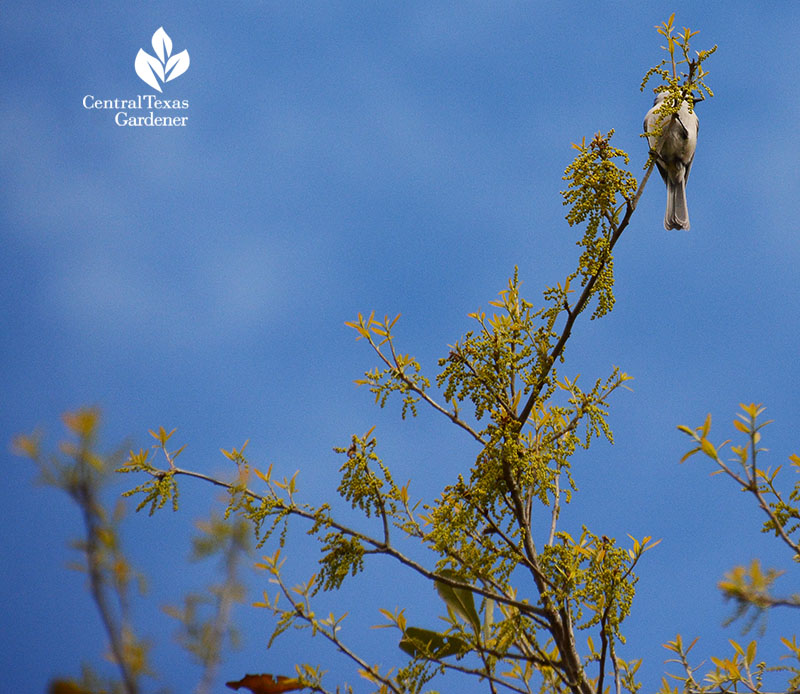
Good news, though—it’s tree planting time in Central Texas! Our target is October 1 – March 31. For us, Arbor Day is November 5 (not in April), since we want to give new roots a head start against brutal heat. The exception: citrus trees and other subtropicals, which we plant after frost is gone for good.
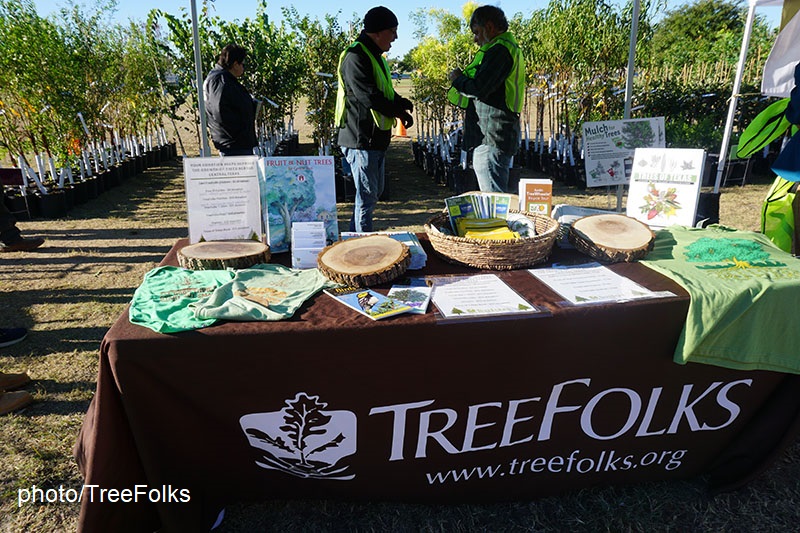
So this week we’ve got your start-here tree planting tips to reduce the heat island effect and tree canopy inequality. John Hart Asher joins TreeFolks Executive Director Andrew Smiley and Education Coordinator Collin McMichael to keep Austin rooted as we grow our urban forest together.
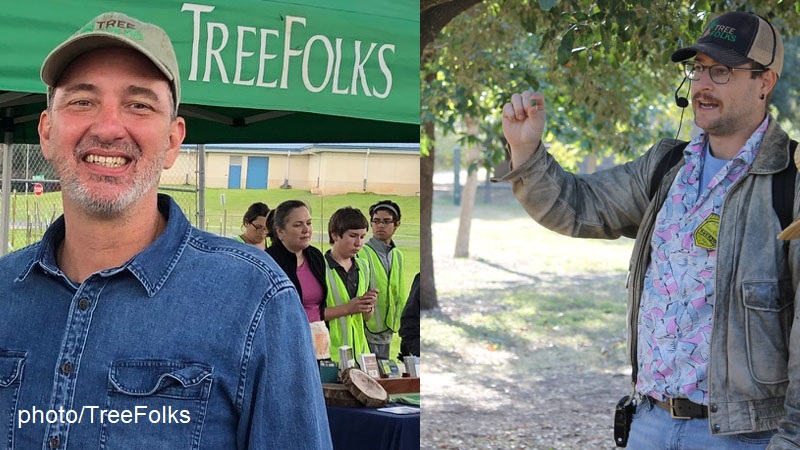
Since TreeFolks germinated in 1988, they’ve planted a whopping 3 million trees. It started with a small group of people asking, “How can we locally address climate change?” Since their mission was rooted in community, Andrew noted that along with planting trees in their own yards, “They planted trees in their neighbors’ yards, at schools, and other public spaces.” With a boost from then-City Forester John Giedraitis (one of CTG’s first guests), they partnered with the city of Austin, AISD, and other organizations, galvanizing volunteers of all ages over the years.
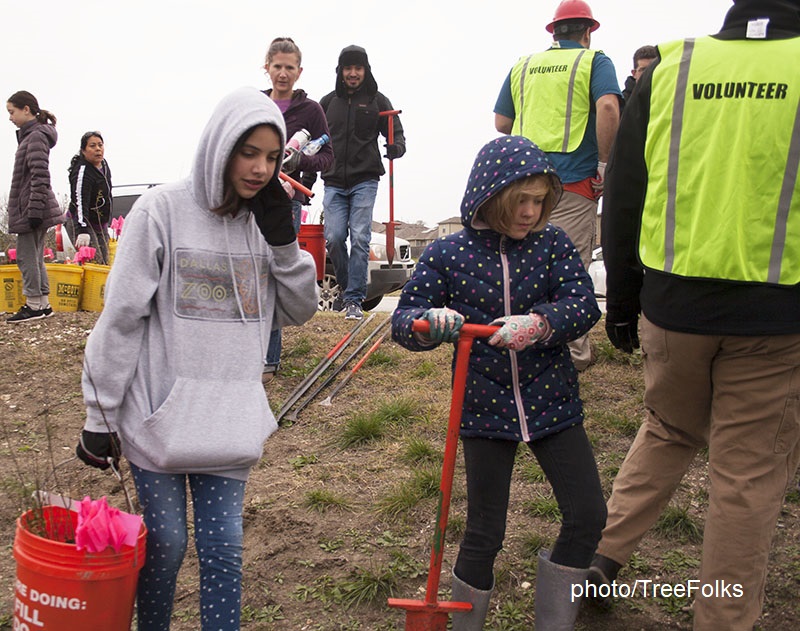
Even in 1988, Austin was no sleepy college town or brisk Maine climate, but we sure had a lot more trees and green spaces. We started hearing about the urban heat island effect. This past summer, one of the hottest on record, we watched storm after storm split and veer right around us, leaving us in the dust. Now, we’ve recognized how tree canopy inequality also impacts quality of life across communities.
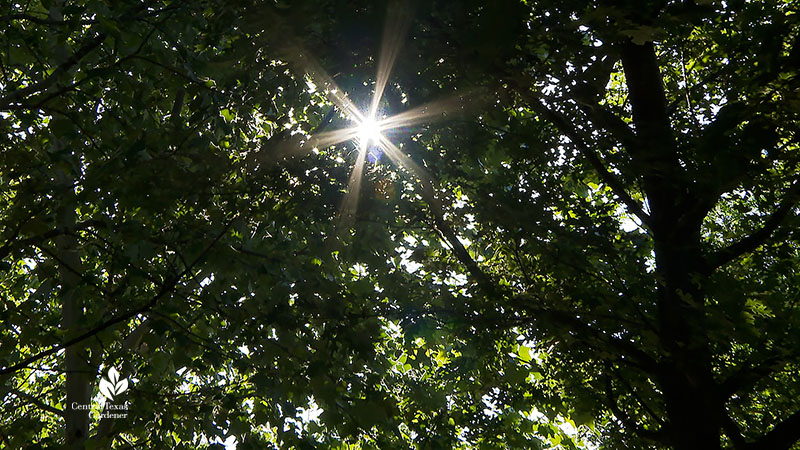
“We’re talking cooler temperatures, less noise, better health outcomes. Here in Austin, urban canopy is not really distributed equally across the entire city. So we see a lot more trees in West Austin where we have a more affluent population.” Collin noted. Since temperatures drop 10 degrees with 40% tree cover, TreeFolks concentrates on bumping up shade in East Austin.
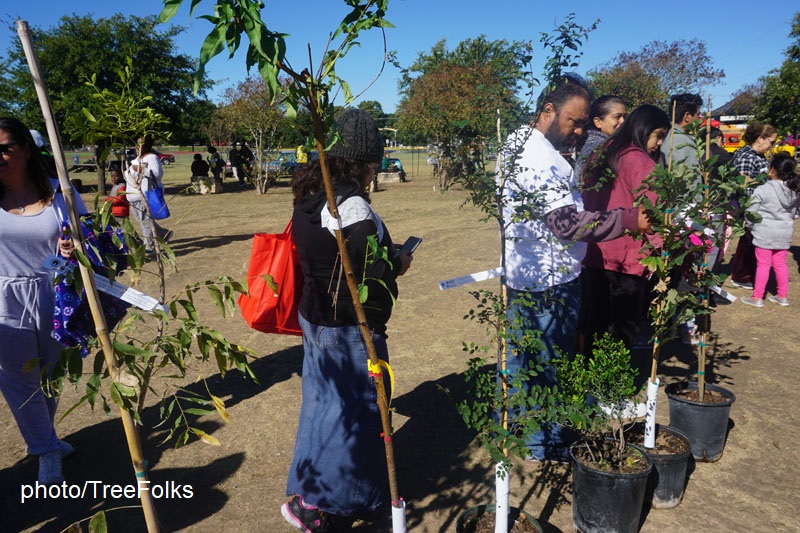
TreeFolks recommends diversifying our tree selections to avoid widespread loss by pathogens or insects (like oak wilt and emerald ash borer), age, and natural disasters. “It’s called the 30-20-10 rule. 30% from one family, 20% from one genus, and 10% from one species,” Collin explained.
LIVE OAK
Family: Beech
Genus: Quercus
Species: virginiana
Their website includes a tree menu in English and Spanish with selections of all sizes. Durable native cedar elm’s a large shade tree, one of our notable fall leaf-peepers!
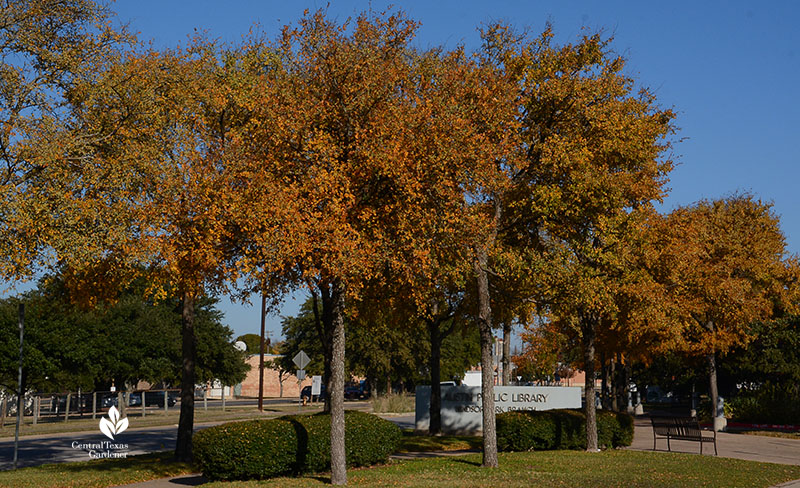
Texas A&M Forest Service’s tree planting guide includes an interactive tree selector to choose the right tree(s) for you. Understory native Mexican plum blooms around Valentine’s Day to heart us all, including hungry pollinators.
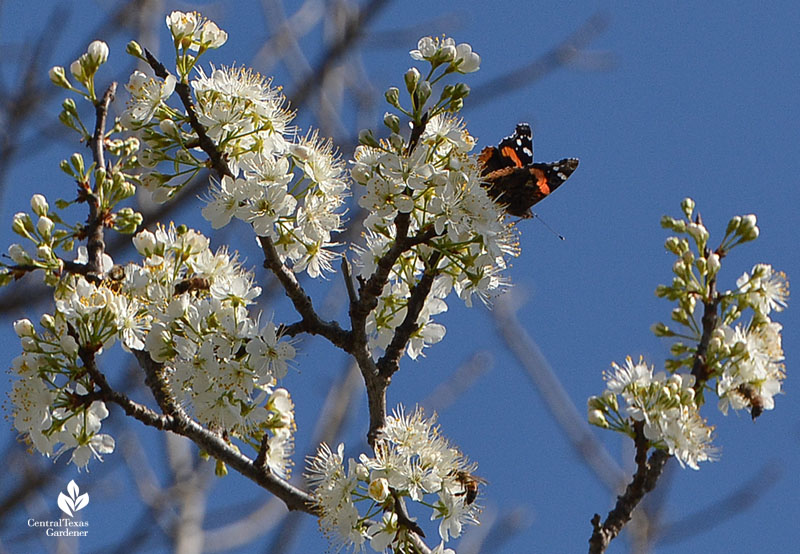
Also, think in layers. Adding understory trees like Mexican plum, mountain laurel, Mexican or Texas redbud, and these white-blooming anacacho orchid trees magnify cooling as leaves transpire (releasing water from their leaves) through canopy layers.
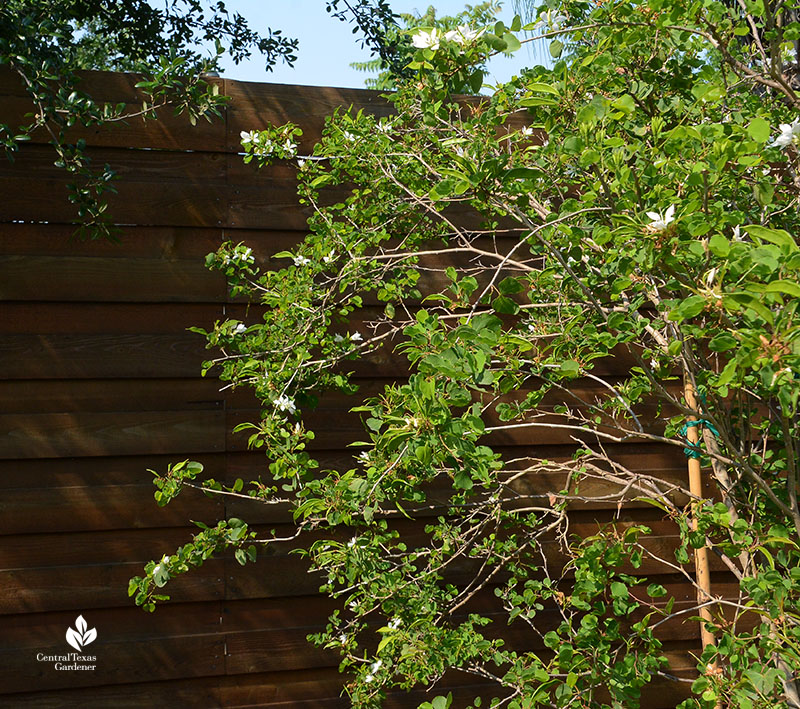
Here’s a nice curbside privacy break with Texas mountain laurel, anacacho orchid, and red yucca for the hummingbirds.
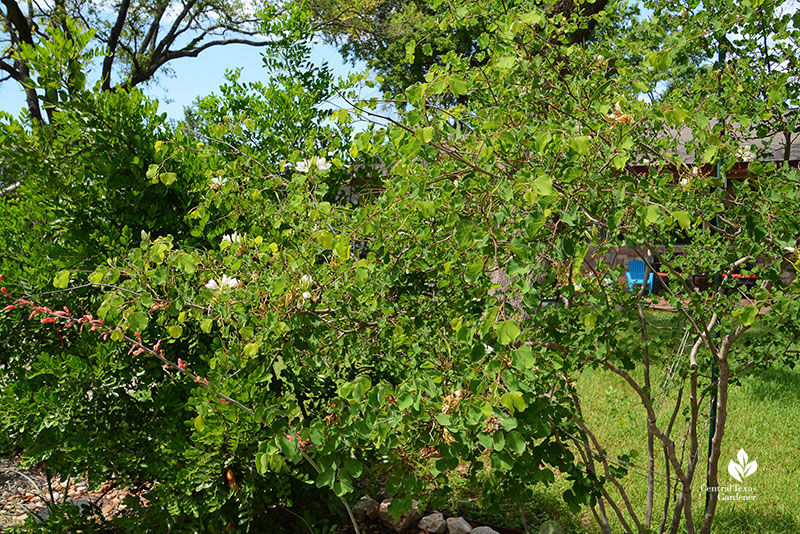
Plus, diversity contributes to the wildlife that enriches our lives. All kinds of pollinators flock to flowering trees, including Texas mountain laurel, its springtime fragrance prompting sweet memories of icy grape sodas!
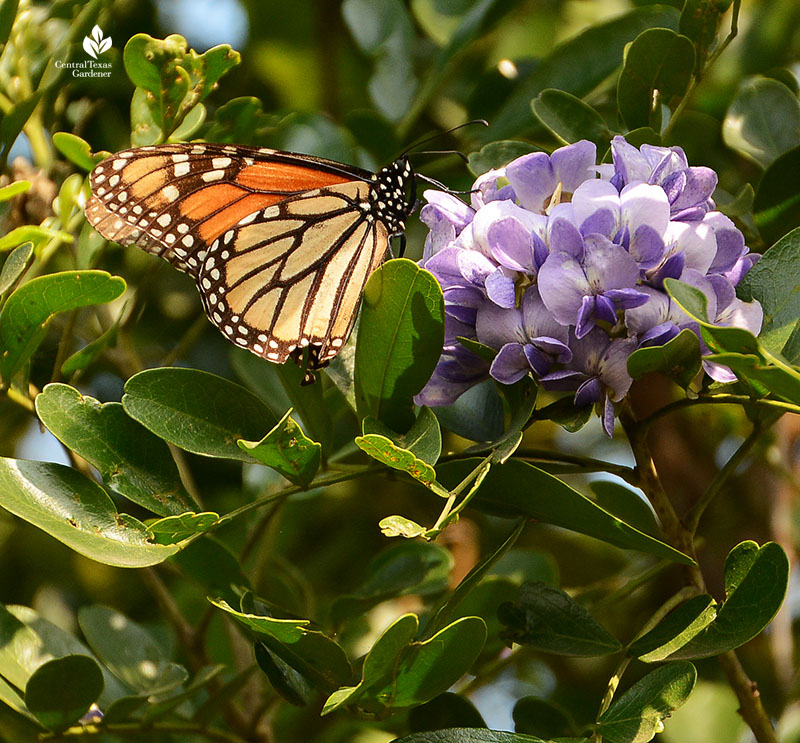
Shade tree chinkapin oak’s acorns feed wildlife in winter (we can eat them, too).
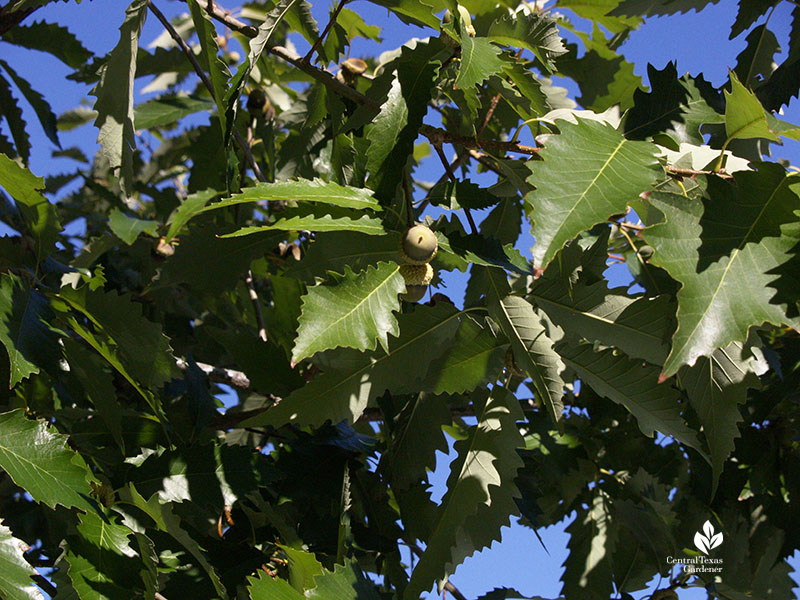
Collin gives us a quick “how to” on planting, but you can watch his comprehensive TreeFolks’ video here. Most important: spread circling roots, expose the trunk flare at the bottom, and never plant the trunk flare below ground.
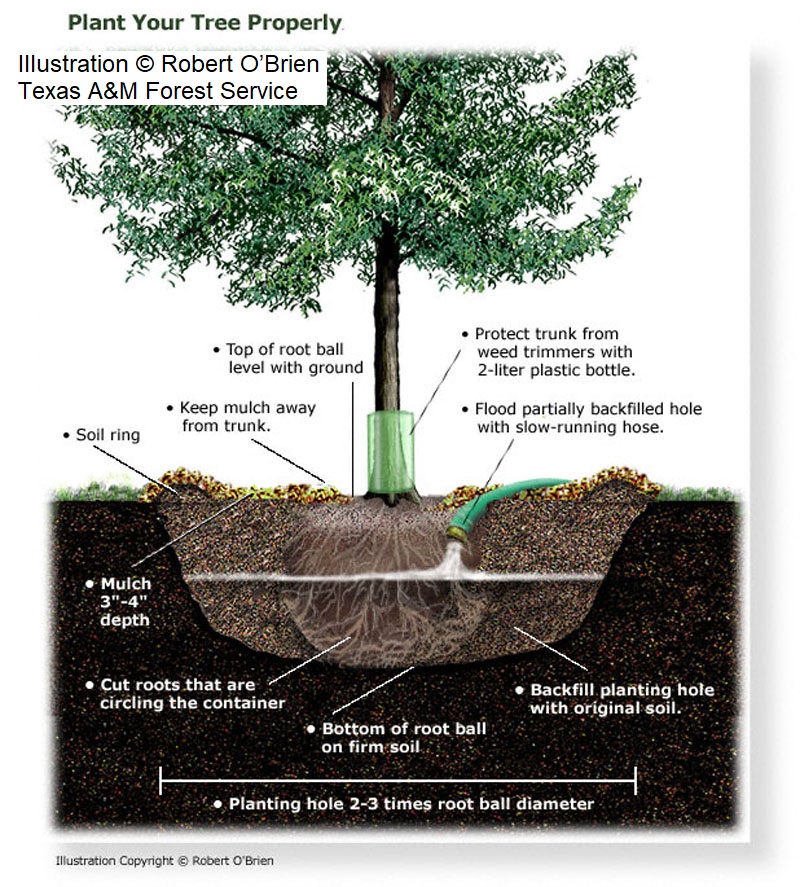
And, never volcano mulch like this! It’s a surefire way to kill a tree. Keep mulch 4-5” away from the trunk of the tree.
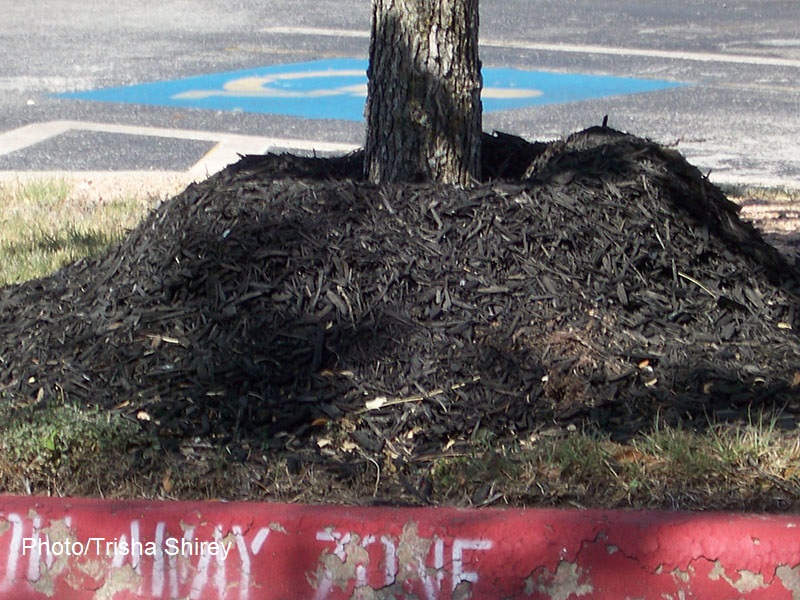
Finally, bigger is NOT better. A sapling will grow much faster than a larger tree that’s been potted up over and over again during its lifetime.
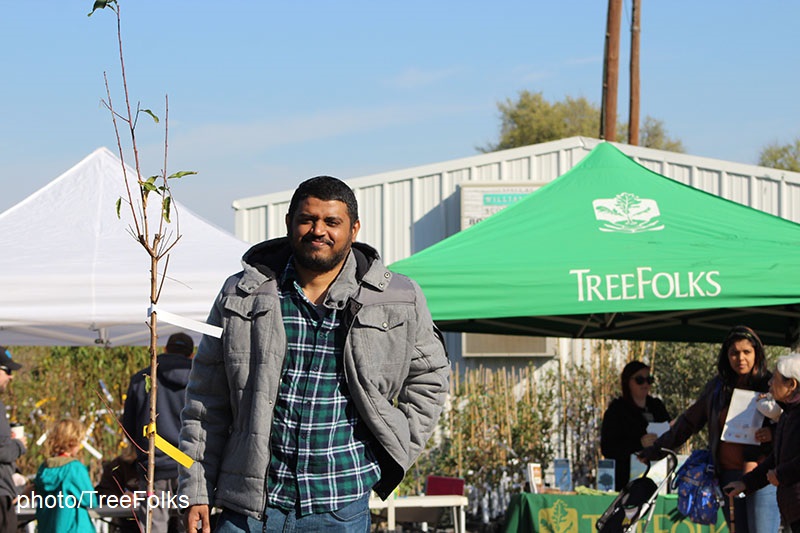
Austin residents qualify for free trees, either at curbside events or home delivery.
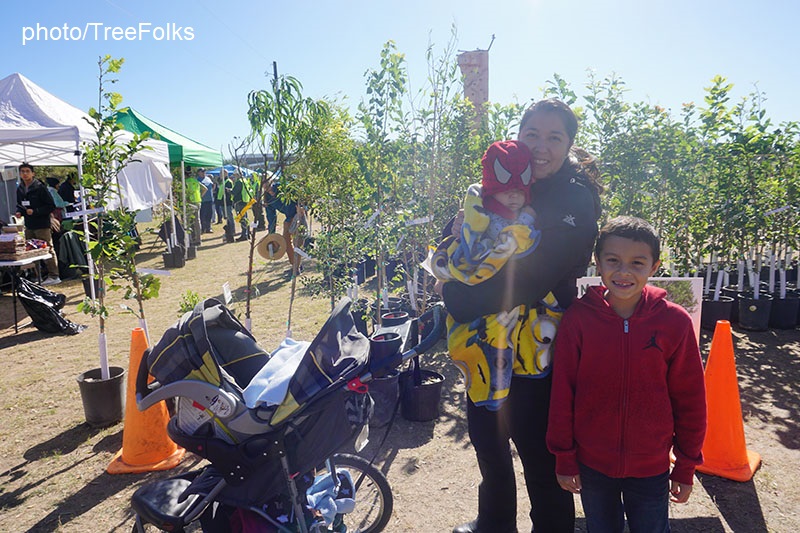
Visit TreeFolks for resources on tree problems, planting tips, and identification. Learn and grow as a volunteer, urban tree steward, or to assist with reforestation projects after natural disasters.
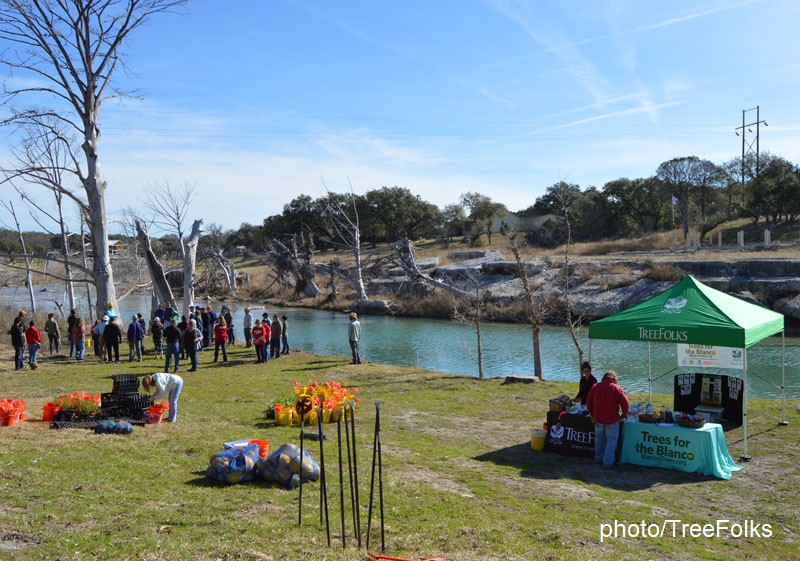
And donate to support their mission: planting over one million trees for future generations!
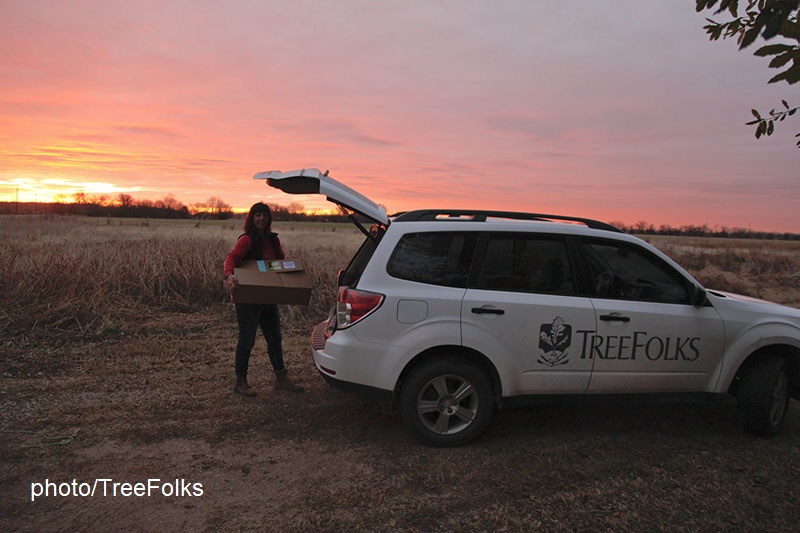
Watch now for a whole lot more to #keepaustinrooted!
Thanks for stopping by, Linda
tags:

